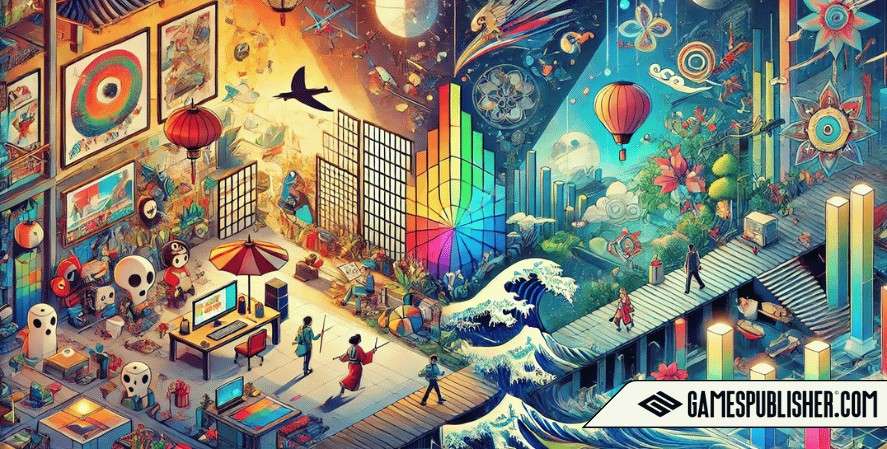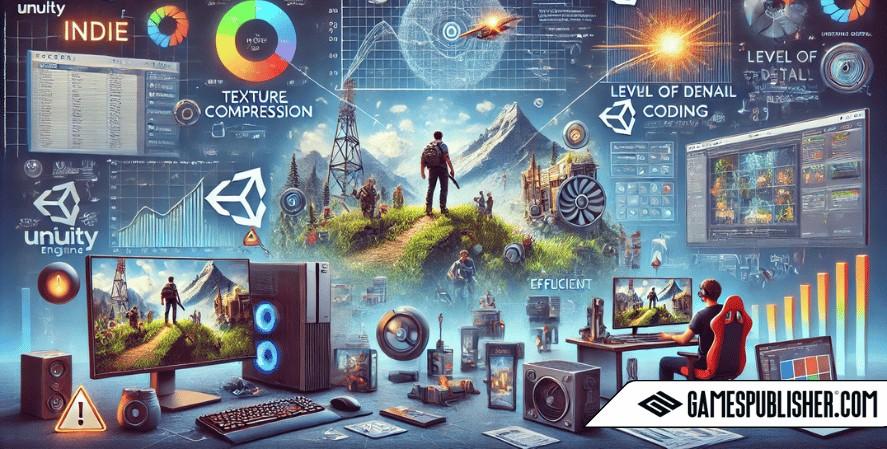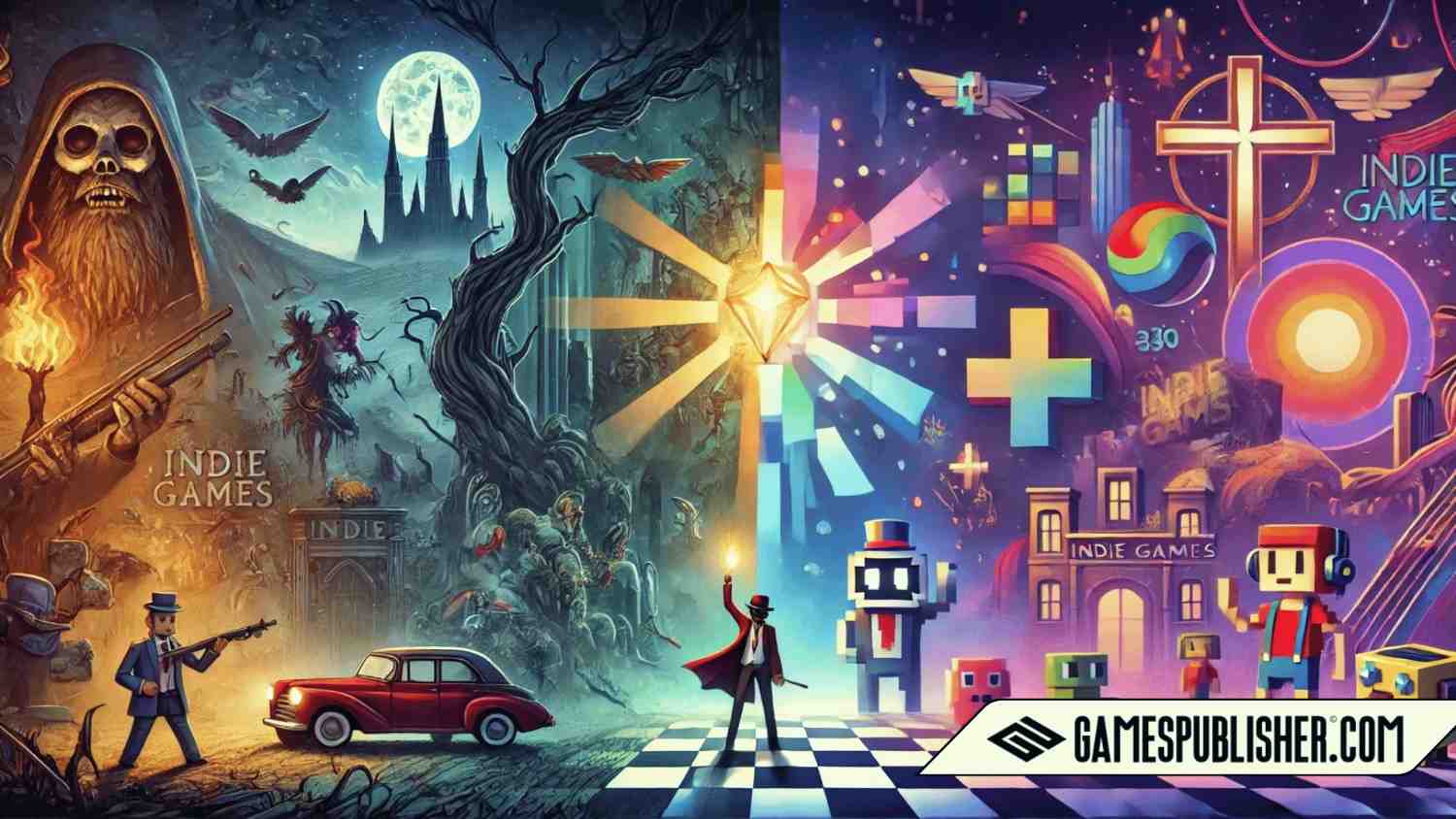Graphics play a big role in the success of indie games. For indie developers and publishers who want to learn more, Gamespublisher.com is a great resource. Graphics in indie games are not just for looks; they can make or break a game.
Indie developers often use unique art styles to stand out. But, it can be hard to balance creativity with good performance on different devices.
This article will explore how graphics help indie games succeed, focusing on visual impact, art styles, and optimization for different devices.
The Role of Graphics in Indie Games

The Impact of Visuals on Player Experience
Graphics are often the first thing players notice about a game. They create the first impression and shape the overall experience. Good visuals can show a game’s theme, mood, and genre before the player even starts playing.
For indie developers, making a strong visual impact is key to getting players interested. Unique graphics can draw players in and make the game more enjoyable and memorable.
Differentiating through Art Styles
Indie games often use different art styles to stand out from big-budget games. Unlike AAA games that aim for realistic graphics, indie games usually choose unique, stylized, or retro looks. This helps them catch the attention of players.
For example:
- Hollow Knight uses hand-drawn, gothic art to create a dark and mysterious world.
- Cuphead is famous for its 1930s cartoon-style graphics, which made it very popular.
- Undertale uses simple pixel art to focus on character design and storytelling.
These games show how indie games can use unique visuals to stand out and succeed.
Creative Boundaries: Exploring Unique Art Styles

2D vs. 3D Art Styles
Indie developers often choose between 2D and 3D art styles. Each choice has its benefits and challenges:
- 2D Art Styles: These include pixel art and hand-drawn illustrations. They are popular because they feel nostalgic and are easier to create. Games like Celeste and Shovel Knight show how 2D art can be simple yet engaging.
- 3D Art Styles: These offer more depth and immersion but are harder to make. They need more skills and tools. However, games like Journey and Firewatch show that even simple 3D graphics can look amazing with good lighting.
Innovative Use of Color and Design
Indie developers often use color and design to make their games unique. The right colors can set the mood, guide players, and highlight important parts of the game. For example, Hyper Light Drifter uses bright and contrasting colors to create a strange, otherworldly feel.
Some games use simple designs to keep things clear and focused. This is seen in games like Monument Valley, where minimalism makes puzzles easier to solve. Others, like Gris, use detailed art to add depth and bring stories to life.
Cultural and Artistic Influences
Indie games often take inspiration from different cultures and art styles. This gives them a unique look and feel. For example, Okami uses Japanese ink wash painting for its visuals.
Ori and the Blind Forest draws inspiration from nature. These influences make indie games feel fresh and new, offering players something different.
Optimizing Graphics for Performance

Challenges of Multi-Platform Optimization
Indie developers face challenges when trying to make their games run well on different platforms.
Unlike big studios, indie teams usually have limited resources. They need to make sure their games run smoothly on various devices, from high-end PCs to consoles and mobiles. This requires careful planning to balance good visuals with good performance.
Techniques for Performance Optimization
Indie developers use several techniques to make sure their games run well:
- Texture Compression: This makes graphics smaller, so the game runs better without losing quality.
- Level of Detail (LOD) Adjustments: This changes how detailed 3D models are based on how close they are to the player, saving system resources.
- Efficient Coding: Writing clean, optimized code helps games run faster and smoother.
Tools like Unity and Unreal Engine help developers optimize their games, making it easier to keep both graphics and performance high.
Balancing Aesthetics with Technical Constraints
Indie developers have to balance good visuals with technical limits. High-quality graphics can look great but may slow the game down. Developers need to focus on what is most important for their game’s look.
For example, Dead Cells uses pixel art and smooth animations to create a fun and fast-paced game that runs well on many devices. By focusing on what matters most, indie developers can create games that are both beautiful and perform well.
The Future of Graphics in Indie Games

Emerging Trends in Indie Game Graphics
New trends are changing how indie game graphics look. Procedural generation lets developers create large, changing worlds with less effort. This makes each player’s experience unique, as seen in games like No Man’s Sky and Spelunky.
Another trend is AI-assisted art, where computers help create or improve graphics. This saves time and effort, allowing small teams to make great visuals. Hybrid art styles that mix 2D and 3D elements are also becoming popular, offering new and creative looks.
The Role of graphics Technology in Shaping Indie Game Graphics
Advances in technology are making it easier for indie developers to create stunning graphics. Techniques like real-time ray tracing offer realistic lighting and shadows, even for small teams.
Development tools and engines are also becoming more accessible, giving indie developers the power to bring their creative visions to life.
As technology continues to improve, indie developers will have more ways to experiment with visuals. This will allow them to push the limits of what is possible, creating games that are both visually impressive and innovative.
Potential Challenges and Opportunities
While the future looks bright, indie developers will face challenges. Keeping up with fast-changing technology and player expectations can be tough. Players may expect higher-quality graphics, which could put pressure on small teams.
However, these challenges also bring opportunities. Indie developers can experiment with new ideas and visual styles, creating games that are unique and engaging. By embracing new technologies and trends, indie developers can continue to offer players fresh and exciting experiences.
Conclusion
Graphics are a key factor in the success of indie games. They shape the player’s experience and help the game stand out. By using unique art styles, indie developers can create memorable games that resonate with players.
Balancing creativity with performance optimization is crucial to ensuring that games look good and run well on different platforms.
The future of indie game graphics is full of possibilities. New technologies and trends will allow developers to create even more amazing visuals. For more insights and resources on indie game development, visit Gamespublisher.com.
Here, developers and publishers can find valuable information to help them navigate the challenges of game development and create standout games in the competitive world of gaming.
Loading survey...

